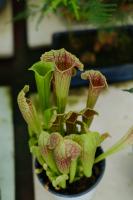Why Don't Plant Cells Burst When Water Enters Them?
Plants function by absorbing water and essential nutrients from the soil, but have you ever wondered why plant cells don't burst when water enters them? In this article, we'll explore how plant cells cope with the influx of water and maintain their structural integrity.
The Cell Wall and Turgor Pressure
Unlike animal cells, plant cells are surrounded by a rigid cell wall made of cellulose. This external layer provides structural support and helps to prevent the cell from expanding or bursting under high pressure. Internally, there is a vacuole filled with water, which exerts pressure against the cell wall. This pressure, also known as turgor pressure, creates a force that balances the inward osmotic pressure of water trying to enter the cell.
Osmosis and Membrane Transport
Osmosis is the process where water molecules move from an area of higher concentration to an area of lower concentration through a semi-permeable membrane. In plant cells, the semi-permeable membrane is the plasma membrane, which selectively allows substances to enter or leave the cell. The plasma membrane also contains protein channels and transporters that regulate the movement of water and other essential nutrients.
Aquaporins
To facilitate the movement of water, plant cells contain specialized proteins called aquaporins. These proteins create channels in the plasma membrane that selectively allow water molecules to pass through, while excluding other molecules. By regulating the number and activity of aquaporins in the membrane, plant cells can control the rate of water transport and prevent excessive water accumulation.
Adaptive Mechanisms
Plant cells also have adaptive mechanisms to cope with changes in osmotic pressure, such as when the soil is either too dry or too saturated with water. When the soil is dry, plant cells can reduce the osmotic pressure inside the cell by pumping ions out of the vacuole, which reduces turgor pressure and prevents the cell from shrinking. Conversely, when the soil is waterlogged, plant cells can pump ions into the vacuole or synthesize organic solutes to increase the osmotic pressure inside the cell, which maintains turgor pressure and prevents the cell from bursting.
Conclusion
The ability of plant cells to regulate water transport and osmotic pressure is essential for their survival and growth. By having a rigid cell wall, specialized transporters and aquaporins, and adaptive mechanisms, plant cells can maintain their structural integrity and prevent damage from excess water accumulation. Understanding how plant cells cope with osmotic pressure can also have applications in agriculture, where crops can be genetically engineered to better cope with drought or flooding conditions.

 how many times do yo...
how many times do yo... how many planted tre...
how many planted tre... how many pine trees ...
how many pine trees ... how many pecan trees...
how many pecan trees... how many plants comp...
how many plants comp... how many plants can ...
how many plants can ... how many plants and ...
how many plants and ... how many pepper plan...
how many pepper plan...




























